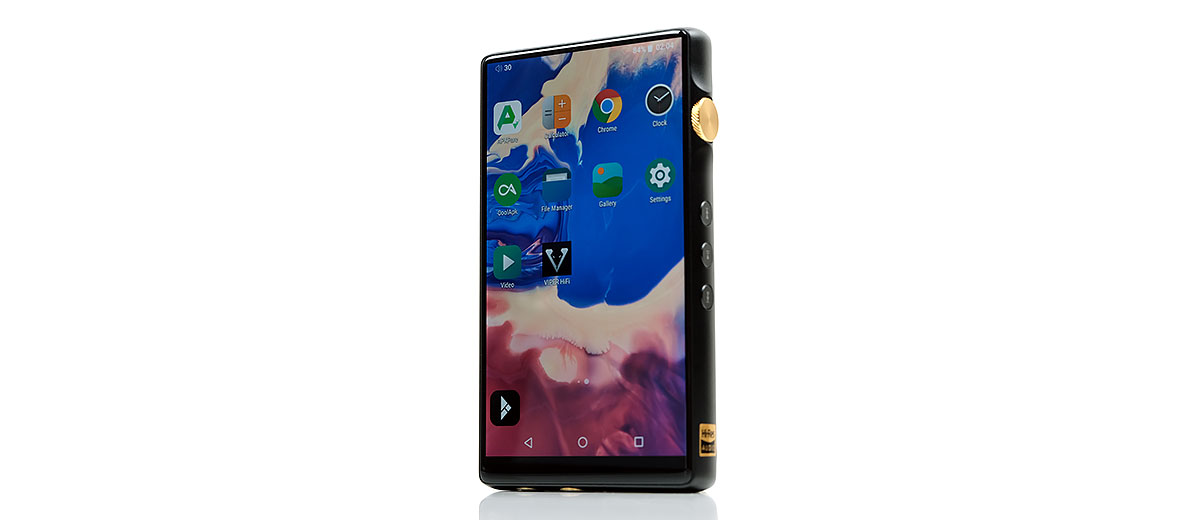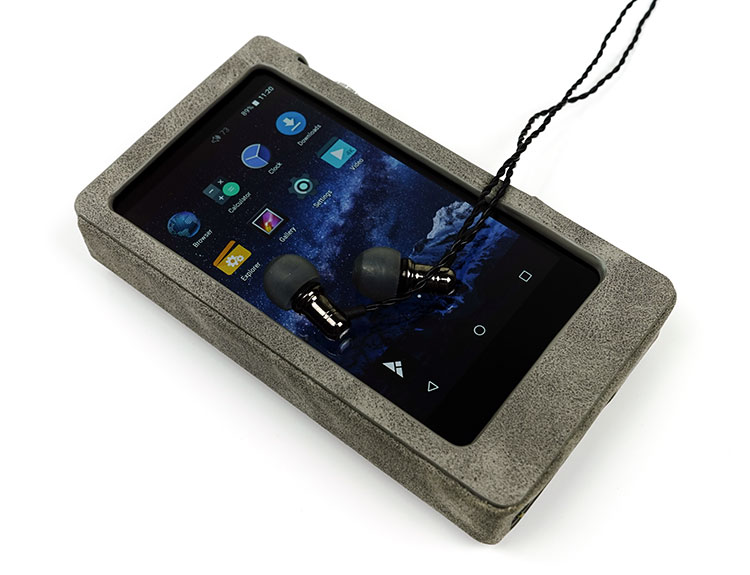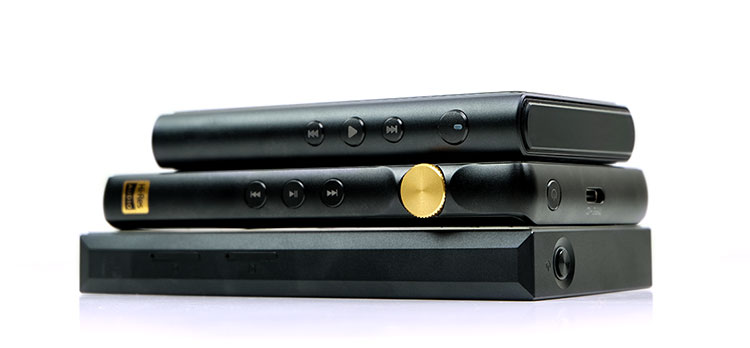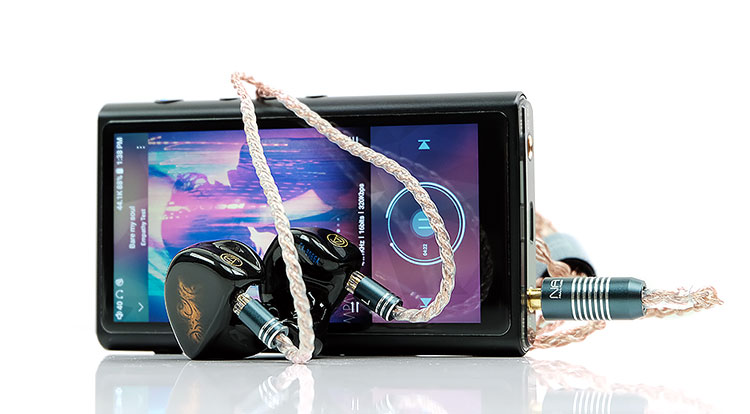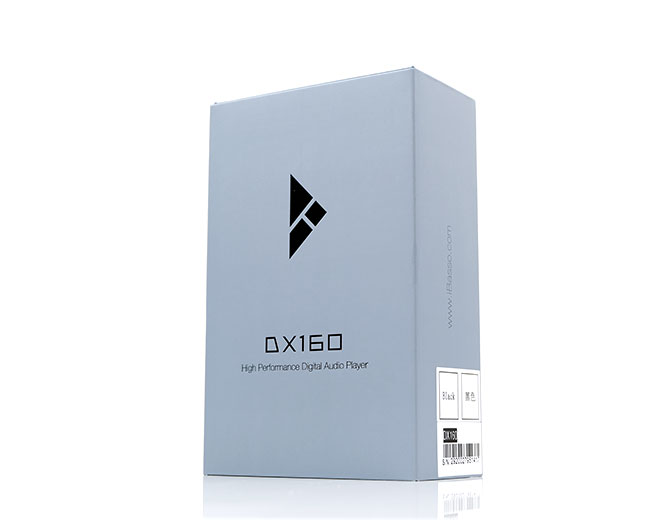Select Comparisons
iBasso DX150
Technical
In a way the DX160 is the successor to the DX150, however, it is not a like-for-like replacement due to the amp card system compatibility on the older model. If you are invested in the amp card system I would say hold onto the DX150 since the DX160 is a fixed amp DAP.
However, if not, and the budget is tighter then the slimline and cheaper DX160 is the way to go, especially if you are not keen on amp cards. The DX150 is a much bigger and chunkier DAP with slightly slower performance numbers and slightly shorter battery life at around 10 hours compared to 13 on the DX160.
Recent firmware updates mean the DX150 is running Oreo but it is not as smooth or as snappy as the DX160 Oreo experience despite both having 2GB of RAM.
The screen is also smaller at 4.2″ and not 1080P capable at 350dpi 16m color 1280 x 768 px resolution. The DX150’s Bluetooth capability is also lower at 4.1 compared to the DX160’s BT5.0.
DAC & Amp
The DAC is a dual 32-bit AKM AK4990EQ implementation which is a fun-sounding but fairly old chipset with lower noise ratings than the DX160’s Dual Cirrus Logic CS43198 implementation.
Whilst it will match DSD and PCM rates of DSD256 and PCM 384kHz 32BIT the DX150 will not natively decode MQA and I am fairly sure it does not have bit-perfect output.
The DX150 amplification is card-dependent so you can get some beefy cards that outperform the DX160 fixed amplification.
Out of the box, the DX150 AMP 6 stock card total Vrms is slightly lower than the DX150 at 4.8Vrms balanced and 2.4Vrms unbalanced compared to 6.4Vrms and 3.2Vrms for the DX160. On higher loads, the DX160 amp will be more powerful.
Performance
The short summary is that the DX160 is technically more resolving, with better instrumental separation and superior dynamic range to the DX150 with its stock AMP card. That midrange will positively leap out at you when pairing with the DX160 whereas the DX150 has a smoother less impactful sound.
The DX150 has more low-end body and bloom and will sound a bit more planted than the DX160’s slightly more linear delivery. However, the DX160 with the likes of the Solaris and Tux 5 sounds more impactful, tighter, and faster.
Nuanced detail is just that bit more noticeable in instrumental texture on the DX160 pairings whereas the DX150 plus stock amp card is perhaps working its even harmonic texture to produce a slightly softer tone.
The DX150 AK implementation is also a lot more centered in its midrange delivery with a bit more vocal delivery whereas the DX160 expands out a lot more. It sounds wider and airier which helps with that better instrumental separation.
FiiO M11
Design
One of the strongest competitors to the DX160 and is also slightly more expensive at $449.99 compared to $399 for the DX160. There are some big differences in these two DAPs which should make it fairly easy to choose which one you want outside of sound preferences.
The FiiO M11 is bigger and heavier than the DX160 at 211g compared to 178g. It has a slightly bigger but lower quality 5.15″ screen with 1440×720p compared to the 1080p capable 5″ screen. It looks more like a thick smartphone than a DAP. Battery life on both is similar at 13 hours each.
Both use rotary dials for volume control with single-slot microSD capable external card features. The two DAPs also have 32GB onboard memory though the M11 has slightly more available space at 26GB compared to 24GB. Both have physical playback control though the DX160 has individual buttons and the M11 uses rockers.
I prefer the layout of the DX160 playback buttons, it feels more intuitive. However, the left-sided placement of the M11 playback and volume is much easier for me to use one-handed.
OS
The OS is an issue here and iBasso are shining with the DX160 despite neither having Google Play out of the box. The M11 uses Android 7 and the DX160 uses Android 8 so we are talking a much older OS.
Also, with the recent update, you can now download and install Google Play APK on the DX160 and it works just fine. Whereas with the M11, you need a custom ROM to access Google Play
On the plus side, the M11 is the fastest DAP on the market today and the highest-rated Antutu benchmark at double the performance of the DX160, (and all other DAPs).
It has a top-notch Samsung Exynos 7872 processor and 3GB of RAM. That is hard to beat at this mid-fi price point and is a tool almost for gaming as much as audio.
Technical
The M11 uses a dual AK4493EQ which is a pretty decent midrange DAC chipset. I am not sure if it is above or below the DX160’s dual CS43198 but judging by the numbers the decoding capability for traditional files is the same at DSD256 and PCM 384kHz 32 BIT.
What the M11 cannot do is decode MQA natively nor is it capable of bit-perfect output which the DX160 can do. Bluetooth is also limited to 4.2 only compared to Bt5.0 on the DX160.
On the amplification side, both are capable of balanced and balanced with 3.5mm TRS and 4.4mm, however, the M11 has an additional switching 2.5mm TRRS balanced output.
In terms of output power and noise, the DX160 is superior with a better mW load on high loads and significantly lower THD+N numbers. You can hear the difference also on sensitive IEMs with the M11 prone to higher background hiss and noise and the DX160 delivering a very black background.
Performance
The M11 has a bit more emphasis on the upper mids and treble. The DX160, by comparison, is more balanced, more linear, and wider in staging but not dead neutral with a little bit of warmth in our tested IEM timbre.
That warmth is not overly done but the more neutral positioning of the treble means the DX160 timbre sounds the more liquid of the two, especially for vocals and percussion.
The M11 contrasts this with a bit more sparkle and teases out a more forward-sounding treble compared to the DX160 when using the Campfire Solaris and Noble’s new Tux 5.
Percussion has more presence, high-pitched vocals may have more presence also. In short, the presentation is a little more weighted upper mids to treble and a bit drier odd-harmonic dominance on IEM timbre.
I would shy away from the Solaris, Tux 5, and Andromeda with the M11. My preference is the DX160 simply because the treble balance on these IEMs is just right. The M11 tends to produce a less forgiving overtone and tips the balance more to the sibilant peaky side of things.
The DX160’s slight treble fade or more neutral overtone keeps the balance just right on these 3 IEMs and makes it a more matchable DAP for me. I would pair the M11 more with slightly less efficient IEMs with a dark or warmer overtone such as the Earsonics Grace or the Lark Studio LSXC.
HiBy R5
Design
The R5 is THE alternative choice here if you are shopping at $399. There are a lot of similarities but also enough differences to present a clear choice. In summary, the R5 is smaller and possibly the more powerful DAP whereas the DX160 is the more aesthetically pleasing and qualitatively more refined sounding DAP.
So yeah, pocket rocket is what I called the R5 and it is the smallest DAP at this price point with Android Oreo 8 inside. However, its 720p screen might be too small to easily use Android compared to the very smooth and very legible 1080P screen of the DX160.
Both have 2GB of RAM inside but the R5 still uses the Snapdragon CPU which is slightly faster in our App boot-up tests compared to the DX160. The Antutu numbers favor the DX160 though when switching that screen down to 720P.
Battery life is a bit better on the R5 at 18 hours compared to 13. A smaller screen helps in that respect as well as a slightly larger battery inside. The DX160 does have more onboard memory at 32GB compared to just 16GB on the R5. Both DAPs have a single microSD card slot for expansion.
OS
The two DAPs are on par for software with both using Android Oreo and both capable of MQA (via the latest firmware) and bit-perfect output. HiBy’s own app is excellent, possibly more refined than Mango for my money.
Both have brilliant DSP and EQ controls with HiBy opting for a more user-friendly MSEB macro-control and the DX160 using a more technically refined but still easy-to-use PMEQ system.
The R5 does have an out-of-the-box edge with Google Play pre-installed and the DX160 uses APK Pure. However, the latest firmware from iBasso will allow you to install Google Play Apk and you are on par once again with HiBy.
Technical
These two DAPs both use dual CS43198 DAC chipset implementations so in terms of technical capability, they decode to the exact same DSD256 and PCM 384kHz 32BIT level. Both can also do native MQA and bit-perfect output with USB-DAC and OTG capability.
The amplification stages do differ though direct comparison on specs is difficult. Yes, both DAPs have 3.5mm TRS and 4.4mm balanced outputs but the R5 seems to have more power on lower loads and the DX160 excels on higher 150-300Ω loads. The DX160 may well be the more headphone-friendly of the two.
The DX160, however, has the more refined amplifier with lower THD+N noise and better SNR numbers and will deliver the blacker background though to be fair, both are excellent with efficient IEMs.
Performance
The DX160 delivers a far more immersive presentation than the R5 with similar IEM pairings. However, I want to be clear that the statement does not mean the DX160 is more intimate sounding because it is not.
The R5 is the more intimate of the two with a more forward vocal presence and perhaps a slightly weightier low-end on the likes of the Solaris and Cayin’s new YB04.
The better immersion comes from the level of resolution, dynamic range, and imaging precision. You simply are more aware of what is happening around you on the DX160.
This is not at the cost of any vocal presence or any midrange suck-out. The R5 and the DX160 do excellent vocals with a relatively smooth-sounding timbre.
However, two things. The R5 vocal presence sounds slightly further forward on our tested IEMs and the second, the staging is not as expansive as the DX160. That results in your ear focusing more on the vocal performance alone on the R5 whereas on the DX160 you hear that plus what is happening around you.
Neither DAP has aggressive treble and both are not as bright or as sparkling as the FiiO M11. If anything, the DX160 has a slightly better level of odd-harmonic control but it is subtle more than obvious. A
s a result, the general timbre on both is more on the natural side with excellent control of sibilance.
Overall, pick the R5 if you like a little more low-end weight and a bigger vocal focus. Pick the DX160 if you want something a shade more neutral and a more complex and wider soundstage.
My Verdict
The DX160 completes what I now call the triumvirate of killer mid-fi DAPs that I have heard this year including HiBy’s R5 and FiiO’s M11.
Importantly, each DAP offers something unique and they all differentiate themselves from each other quite easily. Together, they set a difficult bar to overcome for new entries sub-$500.
For the R5, it is that pocketable size, excellent amping power to a certain extent, excellent HiBy software, and long battery life. The M11 delivers on speed, the fastest DAP out there, and the widest range of analog connections.
And the DX160? Sound quality. I can wax lyrical about it being the prettiest looking DAP with that lovely 1080P screen being a perfect match for Android Oreo but the real payoff is that reference-like hi-fidelity reference sound and the balanced output black background.
It is ridiculously good at $399. With the addition of Google Play by proxy on the latest firmware, my hesitations on the DX160 OS are also vastly reduced.
The choices of DAP are great these days, especially at this price point. The DX160 offers 1 of three DAPs I highly recommend, especially if a reference sound is your thing.
iBasso DX160 Specifications
- Housing material: alloy-aluminum
- OS: Android 8.1
- DAC: Dual CS43198
- Output Ports: 4.4BAL, 3.5PO, 3.5LO, SPDIF, USB output
- Screen: 5.0 inch 1080*1920 Sharp OnCell Full Screen
- CPU: Octa-Core
- Memory: 2G RAM, 32G ROM, Micro USD card
- Wi-Fi: 80 2.11 b/g/n/ac (2.4Ghz/5Ghz)
- Bluetooth: Bluetooth 5.0
- Battery: 3200mAh Lithium-ion polymer battery
- USB connector: Type-C (charging and data transfer)
- Quick Charge: QC3.0, PD2.0
- Audio Formats Supported: MQA, APE, FLAC, WAV, WMA, AAC, ALAC, AIFF, OGG, MP3, DFF, DSF, DXD, CUE, ISO, M3U, M3U8, MQA
- Size: 113mm*69mm*15mm
- Weight: 178g
- Average Play Time: 13 hours (The playtime varies with different resolutions and headphone/IEM loads.)
3.5mm single-ended output
- Output Voltage: 3.2Vrms
- Frequency Response: 10Hz~40kHz +/-0.15dB
- S/N:125dB
- THD+N:0.0004% (no Load, 2Vrms),0.0007% (32Ω Load, 2Vrms)
- Crosstalk: -115dB
4.4mm balanced output
- Output Voltage: 6.4Vrms
- Frequency Response: 10Hz~40kHz +/-0.15dB
- S/N: 130dB
- THD+N:0.00022% (no Load, 3Vrms),0.00022% (32Ω Load, 3Vrms)
- Crosstalk: -125dB
Line out
- Output Voltage: 3.2Vrms
- Frequency Response: 10Hz~40kHz +/- 0.15dB
- S/N: 125dB
- THD+N: 0.00035% (no Load, 2Vrms)
- Crosstalk: -113dB

